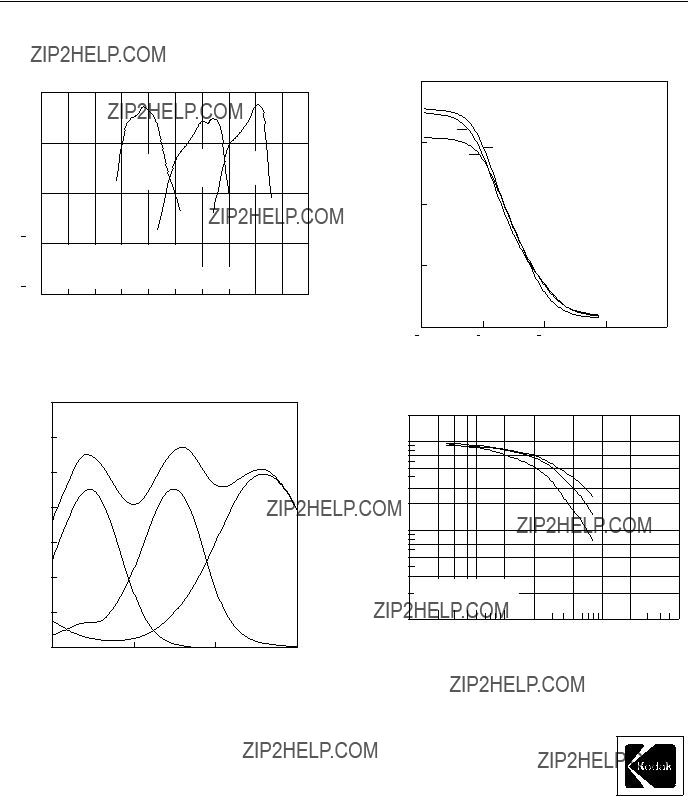
KODAK AEROCHROME III MS Film 2427
KODAK AEROCHROME III MS Film 2427 is a very
It has an ESTAR Base with a clear gel backing. The ESTAR Base has good optical qualities and provides flexibility, moisture resistance, high tear resistance, and excellent dimensional stability.
This film can be processed in Process
APPLICATIONS
KODAK AEROCHROME III MS Film 2427 is intended for low- to
BASE
TOTAL FILM THICKNESS
The nominal total thickness (unprocessed) of this film is 5.44 mils (0.14 mm). This includes
WEIGHT
The weight of AEROCHROME III MS Film 2427 (unprocessed), conditioned in equilibrium with 50 percent relative humidity, is 0.038 lbs/sq ft (0.0172 kg/sq ft).
SPECTRAL SENSITIVITY
This multilayer,
SAFELIGHT
Total darkness is required.
EXPOSURE
Aerial Film Speeds (EAFS or ISO A equivalent) should not be confused with conventional film speeds, which are designed for roll and sheet films used in pictorial photography. The characteristics of aerial scenes differ markedly from those of ordinary pictorial or ground scenes because of the smaller range in subject luminance, atmospheric haze conditions, and other factors. Therefore, different
The KODAK Aerial Exposure Computer, KODAK Publication
Nominal speed, daylight (no filter): EAFS or ISO A 32 (based on development in KODAK
Note: The Aerial Film Speed given in this publication is rounded to the nearest cube root of 2 step (equivalent to 1???3 stop).
Filters
No
Typical Camera Exposure
A typical exposure for this film is approximately 1???500 second at f???4.7. This exposure is based on a solar altitude of 40 degrees, a clear day, and an aircraft altitude of 5000 feet.
When using an aerial camera equipped with an antivignetting filter, or other filter, it is important to increase this typical exposure by the filter factor of the filter used.
IMAGE STRUCTURE
The following data are based on processing in KODAK
*Granularity values read at a net green diffuse density of 1.0 with a
??Eastman Kodak Company, 2005


